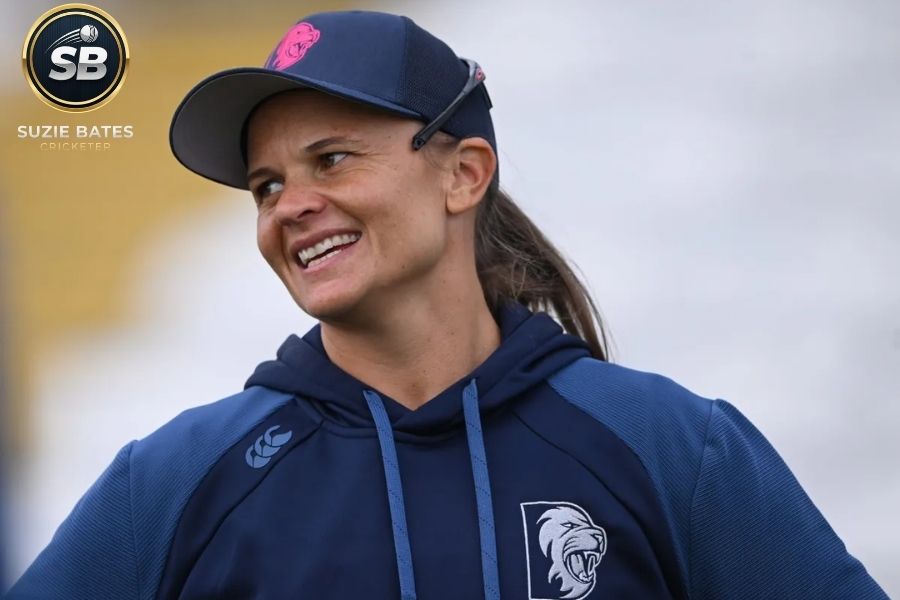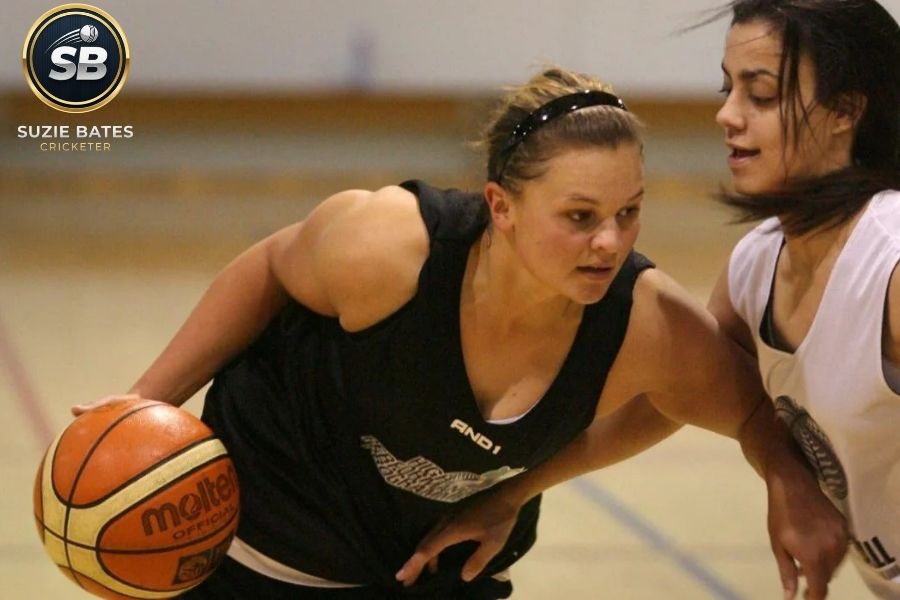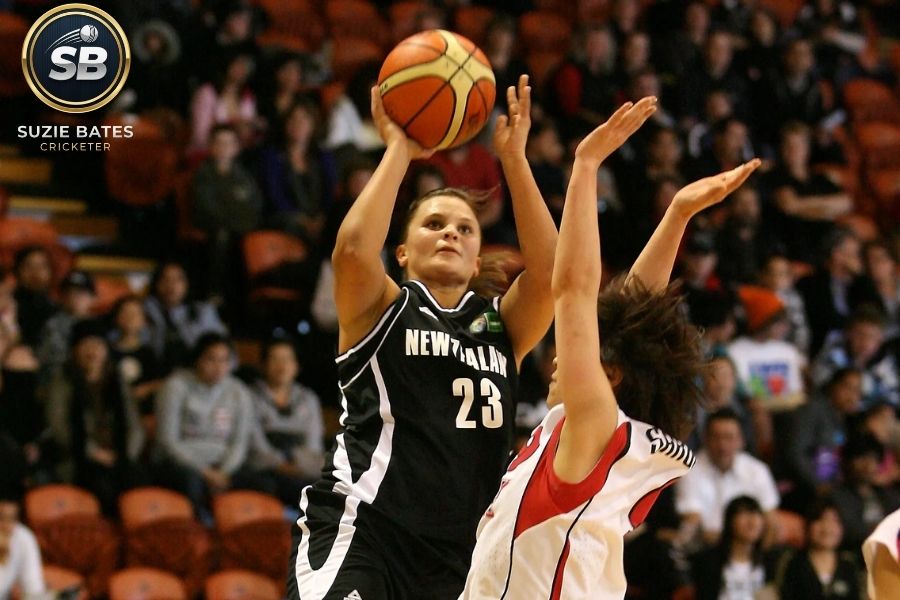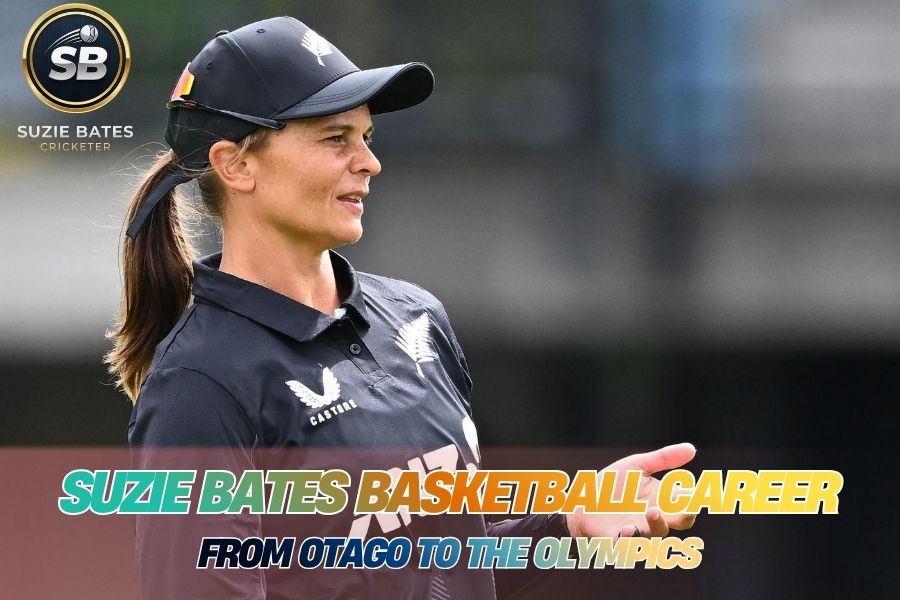Before she became a cricket legend, Suzie Bates was a rising basketball star. Her career with the Tall Ferns, highlighted by the 2008 Olympics, shaped her leadership, focus, and resilience – traits that would later define one of New Zealand’s greatest sporting icons.
Early Bounce: Discovering Basketball in Dunedin
Bates grew up in Dunedin, a city better known for its rugged rugby culture and crisp southern winters than for basketball courts. Yet, from her earliest years at Otago Girls’ High School, she found herself drawn to the game’s speed and structure.
Her physical intelligence – the ability to read space, anticipate motion, and move efficiently – set her apart from her peers. Coaches remember a teenager with effortless coordination, the kind of player who saw plays unfold before anyone else did.
“Even at fifteen, she had a court vision beyond her years,” recalls a former Otago coach quoted in NZ Basketball. “She was like a point guard who could see the whole floor two seconds ahead.”

Rising Through the Ranks: From Otago to the Tall Ferns
By her late teens, Bates had already represented Otago Gold Rush in New Zealand’s Women’s Basketball Championship. Her performances were marked by hustle, composure, and unselfish passing – qualities that later defined her leadership in cricket.
Her breakthrough came when she was selected for the New Zealand Tall Ferns development squad in the early 2000s. The transition from provincial to international basketball was fast, but Bates handled it with her usual mix of curiosity and calm.
In a Stuff.co.nz interview, she once described her teenage routine: morning gym, midday lectures, evening drills, late-night recovery. “I didn’t know what rest days were,” she laughed. “If the lights were on, I was playing something.”
Her hard work earned her a full senior call-up – a moment that would lead to her greatest sporting honor: wearing the silver fern at the Beijing Olympics.
For more detail on these early chapters of her story, check out Suzie Bates’ full Profile & Career hub.
Beijing 2008: The Olympic Dream
At age 21, Suzie Bates entered the Olympic Village not as a cricketer, but as an Olympian. Representing the New Zealand Tall Ferns, she competed against the world’s best – including powerhouses like Australia, Russia, and the United States.
“It was surreal,” she told Olympic.org.nz. “You’re walking past LeBron James and Serena Williams in the village, and you realize – you’re one of them. You belong here.”
Bates played as a guard, a position demanding quick reflexes, accurate shooting, and constant decision-making. Though New Zealand didn’t progress beyond the group stage, her performances were widely praised for energy and consistency. Teammates described her as “the spark who kept the team believing,” especially during their narrow loss to China.
The experience reshaped her understanding of elite sport – the routines, the recovery science, and the psychological preparation. “The Olympics taught me what professionalism looks like,” she later reflected. “Every detail mattered – from how you sleep to how you think.”
The Parallel Path: Balancing Basketball and Cricket
Even as she trained for the Olympics, Bates never stopped playing cricket. Between Tall Ferns camps, she returned to Otago to play for the Otago Sparks, switching from sneakers to spikes with barely a pause.
This dual schedule meant months without true off-days. Summer meant cricket; winter meant basketball. Her ability to switch mental gears impressed coaches in both sports.
“Basketball gave me quick hands,” she said in an ESPNcricinfo interview. “But it also gave me perspective. In basketball, you touch the ball every few seconds. In cricket, you might wait hours. You learn patience in one and urgency in the other.”
Her cross-training developed a hybrid athleticism – fast-twitch agility blended with endurance. That balance became her trademark: the cricketer who moved like a point guard, always reading angles, always in motion.

Skills That Transferred: The Court’s Lessons for the Pitch
Even years later, Bates credits basketball for many of her cricketing strengths.
- Spatial awareness: Reading field placements is like scanning a defense. “You learn how to see gaps before they open,” she explained.
- Leadership communication: As a guard, she learned how to organize teammates in split-seconds – a skill that translated perfectly to captaincy huddles.
- Explosive movement: Her first-step quickness on the basketball court became her signature running between wickets.
- Rhythm and timing: In basketball, shooting requires balance; in cricket, batting demands it. Both rely on flow.
As former White Ferns coach Haidee Tiffen once noted, “Suzie’s court sense became her cricket sense. She reads the game like a strategist, not just a striker.”
The Decision to Step Back
By 2010, the weight of dual commitments began to take its toll. Between international cricket tours, Olympic qualification events, and domestic basketball, there simply weren’t enough hours.
Her heart was torn between two loves, but practicality won. New Zealand Cricket offered her a leadership role, and the White Ferns’ future centered around her batting.
“It wasn’t that I chose cricket over basketball,” she said to Balance is Better. “It was about where I could give 100 percent. I realized I’d given basketball everything I could at that point.”
Still, basketball remained part of her rhythm. She would often train with Otago’s basketball coaches for conditioning or spend off-seasons scrimmaging with local players “just to keep the brain sharp.”
The Comeback That Proved It Never Left Her
In 2014, six years after Beijing, Bates quietly returned to the Otago Gold Rush. She played several matches in New Zealand’s Women’s Basketball League, averaging double-digit points and leading the team in assists.
Fans were stunned – not that she could still play, but that she was still that good.
“I thought I’d lost my jump shot,” she joked. “Turns out, it was just hiding behind a cricket helmet.”
Her return showed that high-level skills, once learned, never truly disappear. It also reignited discussion about multi-sport athletes and their longevity – how diversity of movement and mindset can prevent burnout.
A Culture of Cross-Training
Bates’s basketball career became a blueprint for New Zealand’s next generation of athletes. Sports bodies now cite her as a case study in “balance-based development”, promoting participation in multiple sports during youth.
Her journey echoes the philosophy of Balance is Better, a nationwide movement encouraging long-term athletic growth over early specialization.
In clinics, Bates often tells young athletes:
“Don’t rush to be elite. Play as many games as you can. Every court, every field teaches something different.”
For her, basketball wasn’t a stepping-stone to cricket – it was a parallel education that shaped who she became as a leader, teammate, and competitor.
Beyond the Stats: What the Basketball Years Meant
Looking back, Suzie Bates’s basketball career is defined less by numbers than by influence. Yes, she competed at the Olympics, captained regional sides, and was among New Zealand’s top guards. But the true value of that chapter lies in how it rewired her approach to sport.
Basketball gave her an instinctive understanding of tempo – how to speed up or slow down a game’s rhythm. It taught her to see sport as art and geometry, not just competition. It also taught her grace – to win with humility and lose without excuses.
She often draws parallels between a fast break and a cricket chase: both rely on teamwork, timing, and trust. “It’s the same heartbeat,” she says. “Five players, eleven players – you’re still trying to move together toward one goal.”
Legacy: The Tall Fern Who Became a White Fern
Few athletes have bridged two national programs at once. Suzie Bates’s basketball legacy remains a point of pride for New Zealand Basketball, which continues to honor her dual contributions.
Today, when she visits Tall Ferns training camps, younger players still ask what it was like to guard the world’s best in Beijing. She always smiles and says, “Fast – too fast. But unforgettable.”
Her jersey from that tournament now hangs in a Dunedin gym – a quiet reminder that behind every cover drive she plays lies the memory of a perfect jump shot.

The Final Word
Suzie Bates’s basketball career wasn’t a detour; it was a foundation. It built her reflexes, her leadership, and her resilience. It made her the athlete who could handle both heartbreak and triumph with equal poise.
When she steps onto a cricket field today, there’s still a trace of the court in her movement – the bounce in her stride, the awareness in her eyes, the balance in her soul.
As she once told ESPN, reflecting on her dual journey:
“Basketball gave me courage; cricket gave me patience. Together, they taught me how to compete without losing joy.”
In a sporting world obsessed with choosing one path, Suzie Bates reminds us that sometimes, the best route to greatness is the one that plays both games – and loves them equally.


